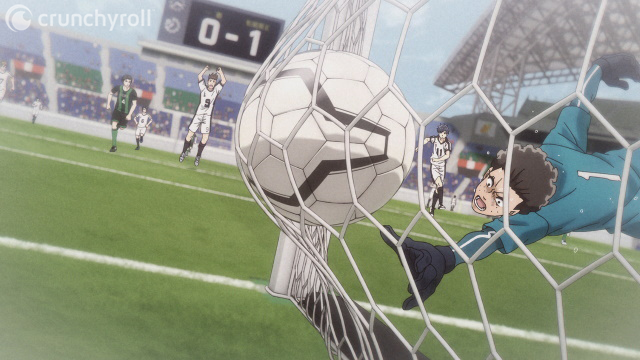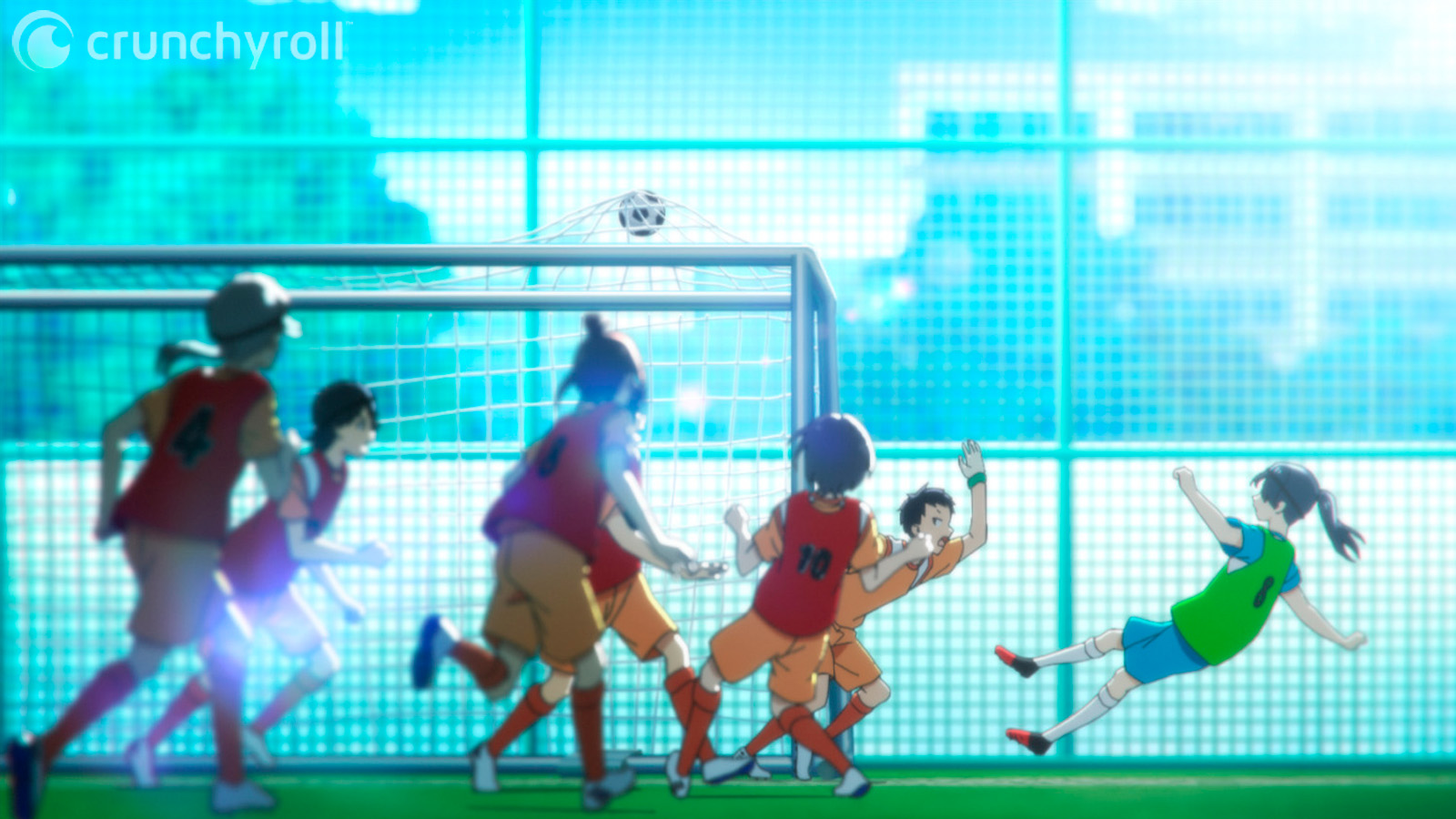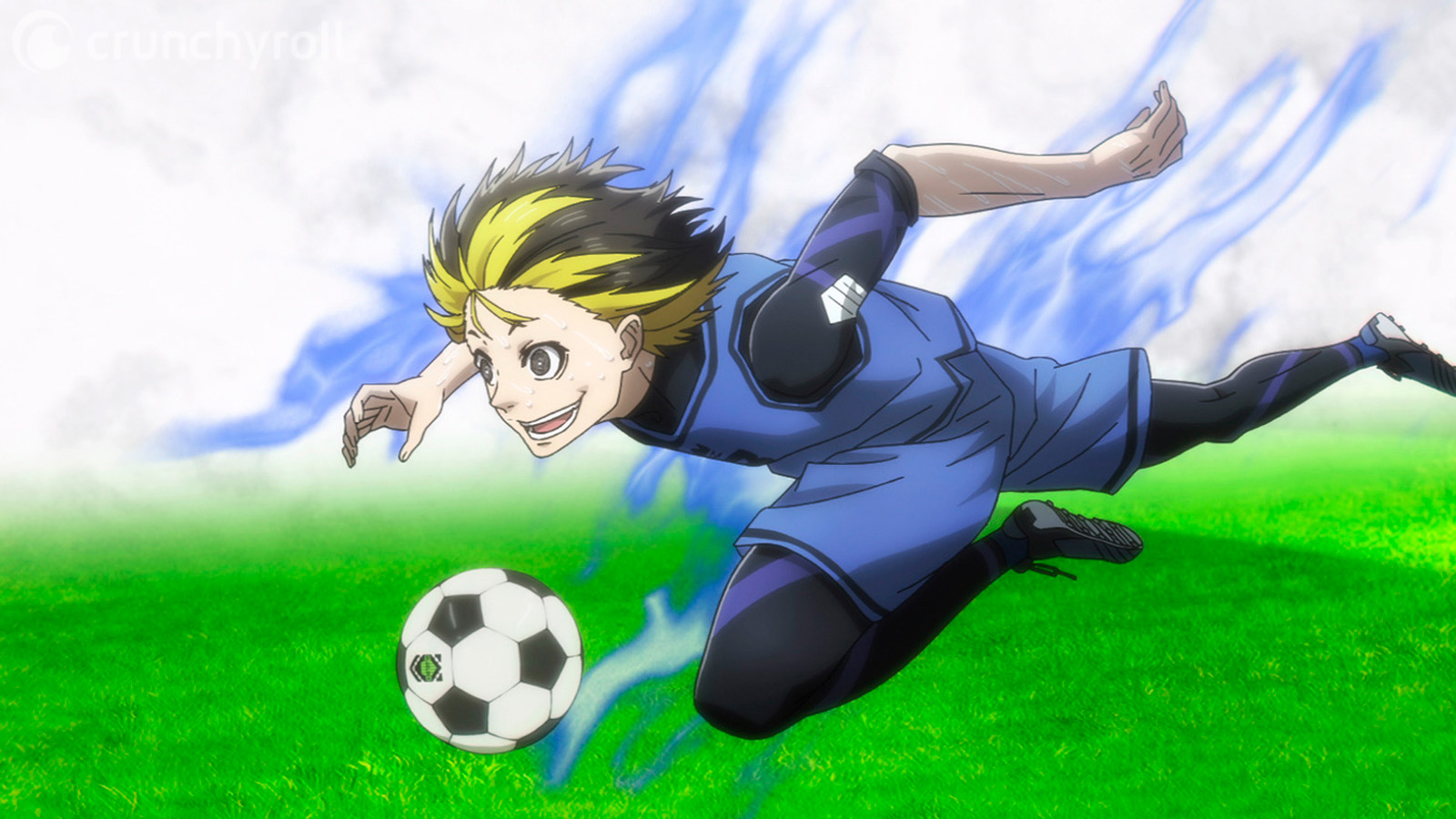DEEP DIVE: Soccer in Anime, from Captain Tsubasa to BLUELOCK

One of the defining characteristics of anime and manga is how diverse their sources of inspiration are. Heck, there’s an anime about bakers, so of course, there are many about one of the most popular sports around the world — how about we explore the history of soccer anime and manga?
While the legendary story of Tsubasa Ozora is arguably the most relevant in anime history, the truth is that it was not the first one dedicated to the beautiful game. That honor goes to Akakichi no Eleven.
The First Soccer Anime

Image via Amazon
More than a decade before Yoichi Takahashi published Captain Tsubasa, Ikki Kajiwara and Mitsuyoshi Sonoda published Akakichi no Eleven in the pages of Shonen King Magazine in the '70s. This manga was soon made into an anime produced by Tokyo TV Doga, as mentioned in the book The Anime Encyclopedia. A Century of Japanese Animation by Jonathan Clements and Helen McCarthy.
Back then, soccer was not that well-known in Japan, despite the fact that two years earlier the national team had won the bronze medal at Mexico's Olympics. The story follows Shingo Tamai and the coach of his school team, Tenpei Matsuki. The first is a rebellious young man with great physical strength, but whose selfishness prevents him from succeeding in the sport. Meanwhile, the latter was part of the team that reached the aforementioned bronze and employs some... questionable training methods.
RELATED: Create Your Ultimate Soccer Anime Dream Team
The depiction of the sport in this anime is very violent and its rules are often ignored, it had 52 episodes and a cameo by Pelé, but it didn’t become very popular. Perhaps it didn't help that a couple of weeks before its premiere, another adaptation of a manga by Kajiwara, the legendary Ashita no Joe, saw the light of day.
There would not be another soccer anime until Ashita no Eleven-tachi, a 1979 TV movie produced by Toei Animation. That film follows a young country boy who is recruited for the youth national team because he can outrun a horse. Yeah, you read that right.
The film was released ahead of the 1979 World Youth Championship, a tournament that was held in Japan and won by Argentina, led by a young Diego Armando Maradona. This project also features a cameo by Pelé, I wouldn’t have it any other way.
The Start of the Revolution
At the end of the '70s, we find the seed that gave rise to Captain Tsubasa. In 1978, the World Cup was held in Argentina and this tournament awakened a passion for soccer in a young Yoichi Takahashi. Still a high school student, Takahashi was already drawing manga and he started to draft what would become his claim to fame. The manga started serialization in Weekly Shonen Jump in 1981 and shortly after, in 1983, got its first anime adaptation and became a cultural phenomenon.
The story of Ozora Tsubasa, the "Heaven-sent child of soccer," immediately caught the imagination of children and teens everywhere. Captain Tsubasa managed to capture the essence of the sport, although he took some artistic licenses with some absolutely impossible plays. Takahashi's hope with his work, in his own words, was that "soccer culture would be acknowledged here in Japan, and I wanted this wonderful, fun sport to spread across the country."
RELATED: BLUELOCK and Aoashi Are Perfect Anime to Get Your Soccer Fix
It's clear 41 years later that Takahashi has undoubtedly fulfilled his mission. His original manga and its sequels have sold more than 100 million copies and it’s still in publication, currently with Captain Tsubasa: Rising Sun. In the medium of animation, the original series was followed by sequels, specials, and remakes. Among these, the anime Captain Tsubasa: Road to 2002, was launched to coincide with the World Cup played that year in Korea and Japan. More recently we had the 2018 reboot, which readapted Takahashi's original manga.
Beyond the fiction, the success of the manga was one of the sparks behind the growing popularity of the sport in Japan, which eventually led to the creation of the current J.League. He also inspired many Japanese soccer stars, such as Hidetoshi Nakata. The impact of Captain Tsubasa, Flash Kicker, Oliver and Benji, or whatever you might call it, crossed the borders of Japan, becoming a global craze among kids throughout Europe and Latin America. Tsubasa inspired sports legends such as Alessandro del Piero, Zinedine Zidane, Raúl, Andres Iniesta, Fernando Torres, Lucas Podolski, Messi, Kun Aguero or Neymar. And of course, kicked off a boom in soccer manga and anime... but also a real team, Nankatsu SC.
Tsubasa's Successors

It is no secret to anyone that once a manga or anime has success in Japan, it starts a trend. In the case of Tsubasa, his first "heir" emerged as early as 1986 in the form of an animated music video for the song "Shooting Hero" by the Japanese vocal quartet Duke Aces.
But Ganbare, Kickers! by Noriaki Nagai, published in the children's magazine CoroCoro Comic between 1985 and 1989, can be considered the first work to actually follow in the footsteps of Captain Tsubasa, complete with his own anime between 1986 and 1987.
A few years later, between 1991 and 1992, the original anime Moero! Top Striker tried to replicate Tsubasa's magic. The series produced by Nippon Animation followed a young man trying to make it in Italy. In 1992, the anime Ashita e Free Kick was released, also following a youth with great aspirations.
RELATED: Aoashi Manga Teams Up With Scottish Football Team Celtic F.C. for Cute Collab
The year 1993 features not one, but three soccer anime. First, we got an OVA for the 1989 manga Offside in the winter season. Next was the bizarre Dragon League, a series that wanted to mix soccer with a fantasy world complete with dragons. In the fall season of that year came the adaptation of Aoki Densetsu Shoot!, Tsukasa Ooshima's very successful manga, published between 1990 and 2003. This came closest to achieving something comparable to Captain Tsubasa's success, though it fell short of its heights.
In 1994 came Goal Field Hunter and Soccer Fever, both of which did not achieve mainstream recognition. Then along came Tobe! Pegasus Kokoro no Goal ni Shoot in 1995. This one follows a team of children who are visually impaired; and later Kazu & Yasu Hero Tanjou, an animated biographical film about soccer player and brothers Kazuyoshi and Yasutoshi Miura.
In 1997 we were given the OVA Field ni Soyogu Kaze and in 2001 Forza! Hidemaru and the Offside TV show, which had 39 episodes and concluded in 2002, the year of the Korea-Japan World Cup. That year also premiered Whistle!, an adaptation of Daisuke Higuchi's manga of the same name. However, all were overshadowed by another work by Yoichi Takahashi himself, the anime adaptation of Hungry Heart: Wild Striker, a manga that debuted that same year with a more realistic approach to the game than Captain Tsubasa. Curiously, that year also saw the publication of shojo manga Shinju no Kusari, which follows the love triangle between two players and the manager of their club.

Coinciding with the World Cup in Germany in 2006, the Area no Kishi manga began, whose anime adaptation would not arrive until 2012. That year there was another shojo manga inspired by the sport, Uwasa no Midori-kun!!
But the one to really reach worldwide success close to that of Captain Tsubasa was Tenya Yabuno's Inazuma Eleven. The 10-volume manga inspired an anime adaptation from 2008 to 2011 that enamored a whole new generation of fans, though its soccer was far from realistic. It also spawned tons of sequels and spin-offs.
It was a total contrast with 2010’s GIANT KILLING anime, an adaptation of Masaya Tsunamoto’s manga, illustrated by Tsujitomo, which gives us a different perspective, capturing the day-to-day life of a professional club.
Other projects include Golden Kids (two-episode ONA from 2011), the manga Be Blues! (2011), the adaptation of Ginga e Kickoff!! (2012), the aforementioned Area no Kishi anime (2012), the short series Yuuto-kun ga Iku (2013), and the OVAs based on the Fantasista Stella manga (2014).
RELATED: 5 Anime Where the MC Works Hard for Their Dream
The year 2016 gave us that gem that is the adaptation of Tsuyoshi Yasuda's award-winning manga, DAYS, produced by MAPPA, and 2017 brought the hilarious Clean Freak! Aoyama-kun, a manga by Taku Sakamoto.
And so we reach 2021, which left us with the first anime dedicated to women's soccer, Farewell, My Dear Cramer, an adaptation of Naoshi Arakawa's manga, which in turn is a sequel to the Sayonara, Soccer manga, later adapted as the beautiful film Farewell, My Dear Cramer: First Touch. These two give representation to women's soccer, which has brought much joy to Japan, winning the 2011 World Cup and being runners-up in 2015, as well as getting Olympic silver in 2012.
2022, the Year of Soccer

With the arrival of 2022, we have received a new wave of soccer anime titles. The first of these was Aoashi, the adaptation of the manga by Yūgo Kobayashi and Naohiko Ueno that began publication in 2015 and owes much more to GIANT KILLING than to Captain Tsubasa thanks to its realism and focus on life in a professional club, in this case, their youth team. The series by Production I.G. has had a very positive reception and boosted manga sales, and it’s well deserved — this is a story that needs to be seen by as many sports anime lovers as possible.
RELATED: Which BLUELOCK Striker Are You Most Like?
In summer came the spiritual sequel Shoot! Goal to the Future, an original story that attempted to recapture the spark of the original anime, is also available on Crunchyroll.
And finally, the soccer anime and manga history has its latest entry in the fall 2022 anime BLUELOCK, an adaptation of Muneyuki Kaneshiro's manga illustrated by Yusuke Nomura. This story gives a twist to what soccer manga and anime have offered us over the last decades, reconciling in a certain way with its origins far from the realism of the sport by mixing authentic soccer with elements of sci-fi and survival games and even reality shows. Sort of like a soccer Squid Game with another Pelé cameo.
This franchise is subversive because it goes against the notions of teamwork that traditional sports anime highlight, recognizing selfishness as necessary to becoming an elite athlete. Maybe it takes it to an extreme, but it does have some basis in reality, which makes this anime a hype train… and the ideal companion to watch with the restart of the soccer season in Europe's big leagues after that "little tournament" that just ended.
Amílcar Trejo Mosquera is a writer for Crunchyroll News and normally calls this sport football. He also writes for O'kuroku Webzine (in Spanish, sorry) and you can find him on Twitch, Twitter or Instagram.
from Latest in Anime News by Crunchyroll! https://ift.tt/fPQNmH4

Comments
Post a Comment